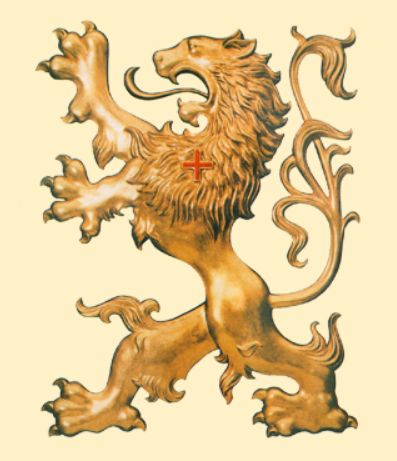|
|
Plinio Corręa de Oliveira
Right? Or Left?
|
|
Translated and Ed. by the American TFP, without revision of the Author. Original title: A justiça está na desigualdade cristă. Published on "Jornal da Tarde", Săo Paulo, 9th June 1979 |
|
|
The words “right” and “left” are currently used to classify positions taken on the greatest variety of themes. The most common use relates to matters of a political, social or economic nature. However, these words may also apply to ways of feeling or being, literature, the arts and the like. In fact, these terms have assumed such diverse and ambiguous meanings that many observers believe they have lost any value as labels for classifying ideological, cultural or moral positions. In spite of the talent, culture and fame of those who have already thought this way for some time, “right” and “left” continue to be words in common use and thus are indispensable for anyone who habitually does ideological analyses. This fact appears to demonstrate that at the core of these words there is something substantial, authentically expressive and even indispensable. They must then be seriously considered until common usage coins other terms to replace them. I propose to analyze that “something substantial” to check whether my feeling for the words corresponds to my readers, and finally to that of the general public. * * * I begin by noting that not everything is imprecise when considering the meaning of “left” and “right.” There is a clear zone. Once this is defined, we can detect the clue that will lead us step by step to cut through the ambiguity and get to a final clarification of the matter. The clear zone is on the left. Consider the trilogy of the French Revolution: liberty, equality and fraternity. Even today, the general consensus will not hesitate to classify the leftist in these terms. Moreover, the perfect and complete leftist does not just defend any liberty, equality and fraternity, but total liberty, total equality and total fraternity. He is essentially an anarchist in the etymological and radical sense of the word (from the Greek “an” - without and “arch”- government) with or without the connotation of violence or terrorism. Moderate leftists may label the total leftist as a follower of a utopian dream. None of them would, however, deny the full leftist authenticity of this utopia. Using this standard of absolute leftism, one can easily devise a leftist scale to classify a program or method. One can gauge leftist content by the more a thing approaches or goes further away from total “an-archism.” Leftism defines itself in terms of the famous trilogy of the French Revolution: liberty, equality and Fraternity. For example, the more effective and general the equality a socialist demands, the more leftist he is. One who demands total equality is totally leftist. Analogous affirmations can be made about another “value” of the trilogy of 1789. I refer especially to political liberalism. The more a liberal calls for total liberty, the more leftist he is. Of course, there are certain contradictions between socialism and liberalism. And these lead to objections to what I have just stated that are easy to refute. The principal objection is that economic totalitarianism destroys political freedom, and vice versa. But this contradiction exists only in the intermediate stages. Neither socialism nor liberalism represent total anarchism, although both can prepare the way for it. Moreover, both absolute freedom and (especially) absolute equality can just as well lead to anarchism. Absolute equality promotes a general offensive by those who are or have less against those who are or have more. In its turn, complete liberty amounts to denying all authority and, therefore, all law. These two so-different ways are not parallel lines that meet in infinity. However contradictory these may seem to today’s run-of-the-mill moderate, total equality and total liberty do converge toward a final “an-archic” point where they meet and complement each other. Thus, according to the general consensus, leftism has both its final goal and scale of values well defined. * * * Now that the “left” has been delineated, the question is whether the “right” also has well-defined goals and values. On this point there is undeniable confusion. The key is to find a clue analogous to that which we found on the left. Then we can go step by step toward classifying the subtle nuances of what it means to be “rightist.” The words “right” and “left” arose in the political, social and economic vocabulary of nineteenth century Europe. Leftism ideologically participated in the thinking and work of a still recent and generally quite defined phenomenon: the French Revolution. The left was not only a volcanic negation of what seemed to be a dead tradition. Rather it was increasingly the affirmation of an inexorable future. In the face of the overwhelming Revolution, the right only really defined itself gradually, in a groping and contradictory way (cf. Michel Denis, Les Royalistes de la Mayenne et le Monde Moderne, Publications de l’Université de Haute-Bretagne, 1977). Thus while the “right” defines itself as anti-leftist and “a fortiori” as anti-anarchist, what does it affirm using the full rigor of logic? I have noted that anarchism essentially affirms that each and every inequality is unjust to the point that the less the inequality, the less the injustice. Liberty is also dear to anarchism, precisely because authority is in itself a denial of equality. Contrary to this, rightism affirms that inequality in itself is not unjust. In fact, God created the universe where all beings are unequal including and especially men. Injustice occurs when one imposes equality on an order of things which God, for the very highest reasons, made unequal (cf. Mt. 25, 14-30; 1 Cor. 12, 28-31; St. Thomas, Summa contra Gentiles, Book III, Chapter LXXVII). Hence, justice is to be found in inequality. It is well to remember in passing that the rightist does not conclude that the greater the inequality, the more perfect the justice. To leftist thinking, the antithetical affirmation (the less the equality, the less the injustice) is logical. Not so with the rightist position. There is a glaring lack of symmetry between the leftist and rightist perspective. Indeed what the rightist affirms is that God did not create terrifying and monstrous inequalities. Rather He created inequalities that were proportional to the nature, well being and progress of each creature and adequate for the general ordering of the universe. This is Christian inequality. Analogous considerations could be made about liberty in society and in the universe. I insist that the standard of rightism is not an absolute inequality, symmetrical to and opposed to absolute equality but rather the proportional inequality explained above. In this way, rightism is defined. The more a doctrine is contrary to the 1789 trilogy and approaches this standard of harmonious and proportional inequality, the more rightist it is. Many thinkers and men of action rose up against the Revolution in the nineteenth and twentieth centuries, and for this reason they were called rightists. However, they often did not understand the essence of rightism. Some of these (or those who studied them) imagined that the label of rightism could justify abysmal inequalities of a political, social, or chiefly economic nature in the name of rightist consistency. Other “rightists” made concession to the egalitarian spirit because they themselves were permeated by the very revolutionary principles against which they fought. At times, others make concessions as a tactic that served to advance their political careers. Consider the official socialist character of Fascism and the not only official but very marked socialist character of Nazism as examples. In this manner, the term “right” was not nearly as clear and precise as the term “left.” Over the years, “rightism” came to embrace not only the true rightism of Christian inspiration of sacral, hierarchical and harmonious nature (cf. Plinio Corręa de Oliveira, Revolution and Counterrevolution, American TFP, 1995 p.45). Rather, it also served as a label for other “rightism” which mixed Christian tradition with peculiar ideological principles (and experiences). While many of these so-called rightist currents had very important socialist notes, everyday language ended up classifying them as rightist because the public imagined they had a greater or lesser affinity with the ideal Christian rightism I described above. After centuries of tradition, everyone still maintains a conscious or subconscious perception of this ideal to aid in this classification. Thus, to the right as to the left, there are definite boundaries from which one may define all the intermediate nuances. * * * The term “sacral” unexpectedly appeared in this article. Space does not allow me to show what the central role of religion is, as I see it, in the authentic rightist conception that I have just outlined. This is obviously my conception and that of the TFP. This idea enters as almost as a postscript because I believe that a secular or atheist rightism is absurd and that a universe and man without God is unthinkable. This does not mean (extending the postscript even further) that I, who am honored to believe - in principle - in the union of Church and State, desire this concretely in our days… About this particular subject, I recommend reading the above-cited Revolution and Counterrevolution for all those interested in knowing the thinking of the TFP. This book is available online. You may access it by clicking here. |
|

